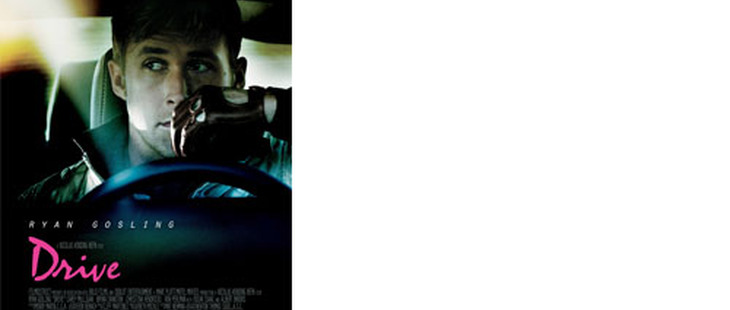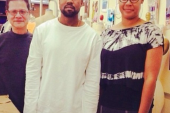

I read with not-great interest The Cut‘s interview with new American model Hailey Clauson, 15. Scouted two years ago and still in the tenth grade, she’s walked in all the real fashion shows: Lanvin, Hermes, Dior. Nothing about this is unusual. Every season coughs up another of these girls, soft and pale and pre-formed and unlearned, selling clothes to women. It is only surprising to me when these girls are professionally interviewed about their youth and inexperience—is no one embarrassed?
Clauson, who apparently sleeps with her baby blanket and doesn’t know what “surreal” means, did say one interesting thing: her favourite supermodel is Veruschka. Yes, Veruschka. Veruschka who ruled the ’60s, Veruschka whose life had been tragic, who made art of it, who was invariably described as “strong,” even “indomitable,” who played herself—but really could act—in Blow-Up. Veruschka who was not discovered until she was, horrors, 20. At 23, Veruschka’s career was made by Diana Vreeland, who let the future supermodel direct her own photo shoots. It seems impossible, a new model doing that now, but I guess that’s what happens when you don’t hire children.
Children are the subject of TIFF-premiering documentary Girl Model, which follows an American agency scout to Siberia, and the models she finds there, and then to Japan, where the new models struggle to work. It’s a very good, uneasily voyeur-ish film, involving much use of blank, blue-eyed stares, unseeing eyes and tricky mirrors. My boyfriend, who hardly understands fashion, watched it with me and said the audition process looked more like human trafficking. It is not, to say the least, glam.
Directors Ashley Sabin and David Redmon made the film because they knew the model scout that is the film’s subject, who thought—hell knows why—they should shoot what she does for a living. Which is, basically: hunt green young things in hungry Eastern European countries, ship them to white girl-craving markets like Japan, and stand by as most of them get chewed up and spit back. She’s excellent at this job, quick and cool and vicious. “Pre-pubescent,” she says approvingly of one girl. “But her hips,” she stage-whispers of another, barely curved tween.
But, in a world where blame circulates endlessly from the very top (fascist creative directors) to the very bottom (consumers who just wanna look young), it’s not hard for the scout to play the sympathetic anti-heroine. A former model herself, and wanly beautiful, she feels at once complicit and trapped; she hates it and herself sometimes, but what else can she do? This is what the agencies want, she repeats. Near the end of the film she gets a cyst removed, and lying in a hospital bed, she shows X-rays of it plainly to the camera. It’s a hideous, vomity thing hiding inside her beautiful body. Oh, look. A metaphor.

“I didn’t want to make this film,” says Redmon. “I’m serious. I didn’t want to make it. When we were shooting the footage of the scouting, there were hundreds of girls. And when I thought it was over, then came another hundred. It was overwhelming. Say your name, say your age, over and over. At some point I had to step away. It wasn’t boredom… I was just, like, I can’t film this anymore.”
Of the hundreds and hundreds, just a few are chosen. The directors followed Nadia, a limpid-eyed, kitten-faced Russian with no body to speak of, and another girl, Madlen, to Japan. Nadia, then 13, became the focus. Her family was poor; at home, her walls were collaged with fashion magazines. She went to Japan giddy with hope. But the castings—and most of them, says Sabin, couldn’t even be filmed—are endless and demeaning to the edge of farce. “She would come home and not say anything,” Sabin says, adding they had no Russian translator. “They’d both turn off the lights in the room and just sit there. It was horrifying, watching her become more and more depressed, and not knowing what to do.”
“We’re not saying modelling is bad, modelling is wrong,” says Redmon. “It’s not a moral judgment. If it’s gonna happen, how do you protect the girls? Maybe it’s creating an age limit of 16, or 18. But it definitely can’t be a young girl going out with adults, being driven out in a van to a casting three hours outside of a city, alone, for 14 hours a day.”
It might be tempting to watch the film and think this only happens in the land of Other. But underage models with agencies, and yet no agency of their own, are as common everywhere. It is partly that innate human longing for youth, but probably more so the industry’s fixation with hanger-size bodies. Kate Moss was cast when she was 14, and you can’t not wonder how hard she worked (and smoked) for decades to stay at her pre-maturation weight. Lara Stone was cast when she was 13; Heidi Mount, when she was 12. Maybe you’ve heard of Thylane Lena-Rose Blondeau, the impossibly named 10-year-old French model who posed as haute stuff for Vogue Paris. (There is a huge, gross difference between child models who—like actors their age—play kids in kids’ clothes, and children playing women in womenswear. Expensive, sexy womenswear.)
Page 2 of 2
Another part of it is just plain capitalism—get the next hot commodity before someone else does—and that’s where restrictions should come in. In 2005, the NBA regulated the draft so that players could only start a year after high school; otherwise, they were too callow for all that money and pressure. It’s a thin parallel, to be sure. But most girl models aren’t old or mature enough, either, for the rejection, isolation, and brutally reinforced insecurities they’ll face. And they’re too young—and often because they’re young, too thin—to sell clothes to grown-ass women. Age restrictions would part-solve the weight (or lack of weight) problem by ruling out girls who just haven’t developed yet, plus protect those girls from actual psychic harm. It is a matter of recognizing that beauty doesn’t make it easier to be a girl, and that models are people, too.
Rachel Blais is a 26-year-old Montreal-based model who appears in the doc and has been working since she was 16. Even then, she says, her agency suggested liposuction (she’s 5’9” and 130 pounds and needs liposuction like Jay-Z needs money). She was also sent away to work, and as Nadia does at the end of the film, got pittance-paying magazine work—then had to buy the magazines herself. And she says she’s counselled countless rookie models through their first-year depressions.
“This doesn’t only happen to Russian girls,” says Blais. “It’s a horror story for Canadians, Americans, all kinds of girls. For models, there is no protection. In London, they’ve opened a union for models, like an artists’ unions. But it took a year for founders to convince people that models are artists. No one wants to represent them.”
There are changes, but they happen slowly and mostly ostensibly. The Council of Fashion Designers of America has urged designers not to cast runway models under 16; last season, though, CFDA prez Diane von Furstenberg had Clauson walk in her show. After an apology, she issued a statement urging all New York Fashion Week participants to ID models at castings. Blais, however, says it’s not happening. A source at a major New York modelling agency told me the same. And here in Toronto, several modelling agencies contacted said they start models from age 13, except Elite, which said they look for “women” over 14. Sutherland Models had the best answer: “we do not discriminate” in regards to age.
My favourite thing about Girl Model is the complicit feeling its fly-on-the-wall cinematography gives you. After all, “you,” the demanding consumer, are the supposed reason for this infinite supply of underage, underweight, underpaid “new girls.” But really, what would you rather have: more models, or more Veruschkas? Let the girls be women, for a change.
Sarah Nicole Prickett is the Toronto Standard Style Critic.
__
Brought to you by the Alliance Film, Abduction, in theatres September 23rd.















